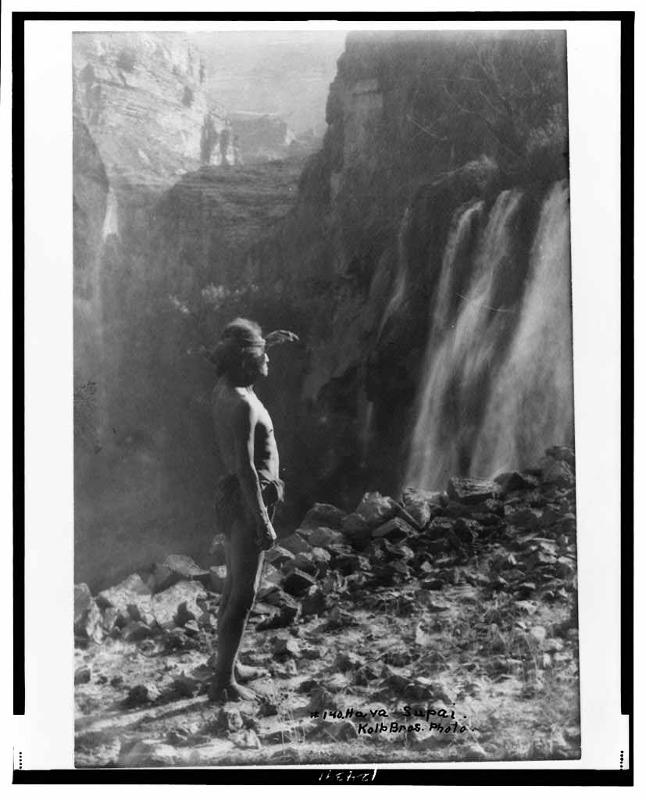Background
The prehistoric background of the Upland Yumans is poorly understood. Like their linguistic relatives along the lower Colorado River, they are believed to have descended from the prehistoric Patayans. Sometime during the late prehistoric record, some of the lowland Patayan people moved into the upland areas. There, they lived a fairly mobile life, constructing temporary brush structures and leaving behind the tell-tale buff-colored pottery that identifies them as Patayan. Other than these ephemeral remains, archaeologists have few clues to help us understand what life was like for these early Upland Patayan people.
Early accounts indicate that historically there were thirteen Pai bands which maintained separate but overlapping ranges. These thirteen bands were loosely grouped into three subgroups, known as the Middle Mountain People, the Plateau People, and the Southern Rim People. Despite these various divisions, all Pai considered themselves to be the same people. Although the two surviving bands are today politically distinct entities, this is the result of U.S. policy.
To the south of the Pai people lived the Yavapai. Although they spoke the same language and descended from the same people, the Pai and Yavapai were bitter enemies.These hostile relations seem to have stemmed from the fact that the Yavapai, who rarely farmed, regularly raided the stored food supplies of the Pai.The Yavapai often allied themselves with the Apache, with whom they were often confused by the Anglos.

Havasupai man, 1911
Source - http://www.loc.gov/pictures/item/99471896/
Click on next page to continue.
